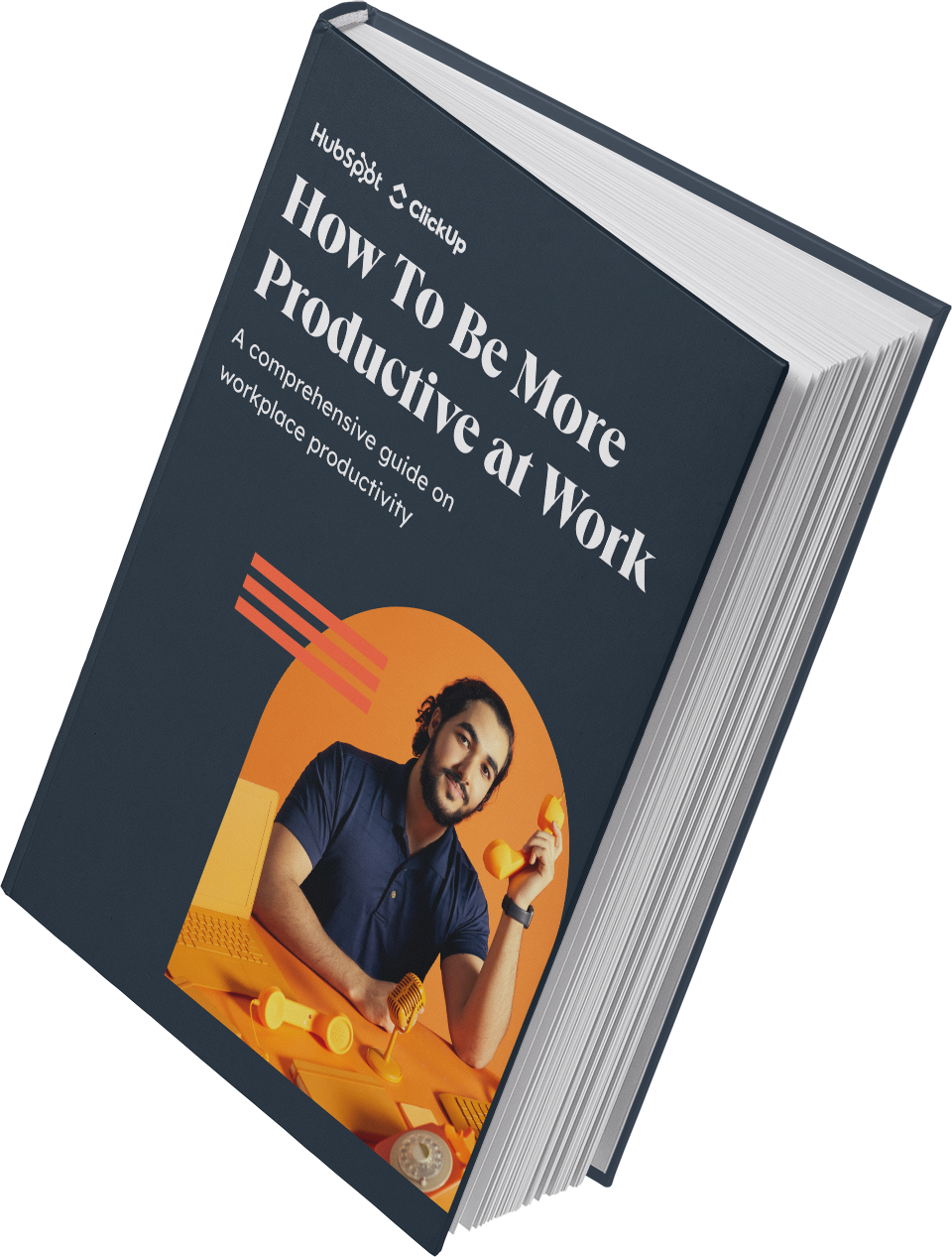Remote work isn’t a trend; this lifestyle is a long-term choice that allows us to get exactly what we want out of our careers. You may need some help greasing the wheels, but I’m determined to help you feel the same about your remote work lifestyle.
Not everyone transitions into remote work smoothly, and that’s okay. Let’s explore the remote work trends, tips, and techniques that can help you get the most out of your remote work.
Table of Contents
What is remote work?
Remote work is the act of doing your job in a separate location from your colleagues. Originally referred to as “telecommuting,” working remotely is now referred to as working from home (WFH), working from anywhere, or location-independent work.
Remote working encompasses people who work from home and also digital nomads who work from Airbnbs or hotels around the world. Some remote workers make this choice to increase freedom and flexibility, or meet financial goals. Others choose remote work to help meet their physical needs, mental health needs, or family demands.
Employers benefit when hiring remote workers because they can have an infinitely larger talent pool to pull from. Still, there’s pushback. Some companies insist that their employees must work in-office, even if it’s not necessary to do their job. The culture of remote work is still actively evolving, and it won’t ever stop.
What Remote Work Looks Like Today for Marketers [Data]
Working remotely can take many different forms, but what does it look like for the “normal” remote marketer?
From where remote workers work to how they’re getting dressed and how they interact with their team members, let’s see what the statistics say about remote workers today.
- Information, finance/insurance, and professional and business services have the largest remote and hybrid workforces. (WFH Research)
- More than 95% of U.S. workers report wanting some form of remote work options, either fully remote work or hybrid. (FlexJobs)
- The pandemic sped up remote work by an estimated 40 years. (WFH Research)
And what does the data say about marketers who work remotely? These statistics are from HubSpot’s 2024 Marketing Work Culture Survey:
- Of marketers surveyed, 31% work remotely.
- Of marketers surveyed, 37% are hybrid employees, sometimes working remotely and sometimes working in the office.
- Of marketers surveyed, 41% said that their company hosted virtual team-bonding activities in the past year, such as parties, celebrations, or games.
- When asked about getting dressed for work, 13% of surveyed marketers said they wear an appropriate top for Zoom calls and remain in sweatpants since they’re off-screen in video calls.
- Since the pandemic, 27% of surveyed marketers said that they feel more overworked, primarily due to heightened work responsibilities.
- When asked about what led to conditions of overworking, 9% of surveyed marketers said that hybrid or remote work contributed because it made some team tasks more difficult.
Types of Remote Work
Today, remote workers all over the world will open their laptops in radically different work environments.
Some will do so from a home office, a hotel room, or an airplane 30,000 feet above the middle of nowhere. The remote environment can take almost any form.
When we look closely at the different types of remote work, two primary categories arise: working from home and working from anywhere.
Work From Home
Remote work is most commonly done from home. Remote workers who tune into work from home may do so from their beds, kitchen tables, or tailored home offices. The process can be as minimalistic or customized as you can imagine.
This type of work melds your personal space together with your workspace, making a healthy work–life balance difficult to achieve. Overworking and underworking can become problems.
There are many benefits to working from home, but it also has unique challenges. People who work from home have to remain productive yet still make time for regular breaks and time away from the computer screen.
The average worker invests a lot of time and thought into developing their most productive work zone and refining their work style. I’ll discuss practical tips and best practices for working from home in a moment.
Work From Anywhere
Remote workers who work from anywhere have to manage their work–life balance the same as everyone else, but they do so while working from a revolving door of locations.
Work from anywhere workers may tune into work from their kitchen table, cafes, coworking spaces, local libraries, or Airbnbs across the world. I’m currently writing this article from a sunny apartment balcony in a small coastal town in Spain (though it’s not usually this idyllic).
Remote workers who combine work with travel are called digital nomads, and they can be found working all over the world today.

I became a digital nomad in 2017. At first, I was drawn into the lifestyle for the opportunity to travel. But something bigger motivates me to maintain a remote work life now: The increased freedom in every area of my life.
“The conversation is much richer, much deeper, and more nuanced than just traveling,” said Mitko Karshovski, founder of the remote work newsletter, Remote Insider. “Flexibility is the true underlying theme.”
Getting a Remote Job
There are three main doors to choose from when you’re looking to transition into remote work.
Pivot from in-office to remote.
If you like your current job, the ideal solution would be pivoting from in-office to remote. Consider discussing this with your manager at the next promotion cycle or performance review (assuming the conversation about your performance is positive).
You won’t be negotiating from a position of strength if tasks and emails have been slipping through the cracks. I’ll share my top tip for staying organized in a moment.
Be prepared to compromise in this discussion, potentially starting with a trial where you work from home for two days a week and then reevaluate at a predetermined time. When your boss sees how productive you are, they might feel more at ease letting you work from home more days of the week.
Join a remote-friendly company.
When looking for a work-from-home job, you can use channels like job sites, local job ads, and social media platforms. Job sites that list work-from-home ads include:
You can also go straight to the source: Job listings by companies that hire remote employees. Some remote-friendly firms include:
Explore freelancing and self-employment.
If your current job isn’t remote work-friendly, you can explore going remote by starting your own business as a freelancer or a consultant. Depending on the nature of your current job, you may be able to start your own freelance business while still being employed.
This is how I started working remotely: I began to write articles in the evenings and on the weekends to develop that income stream while I still had a nine-to-five in-office marketing role.
The benefit of starting your freelance business while still employed is that it reduces the financial strain experienced by any new business. It can also obliterate work–life balance and take away crucial time from family, hobbies, etc.
How to Work From Home
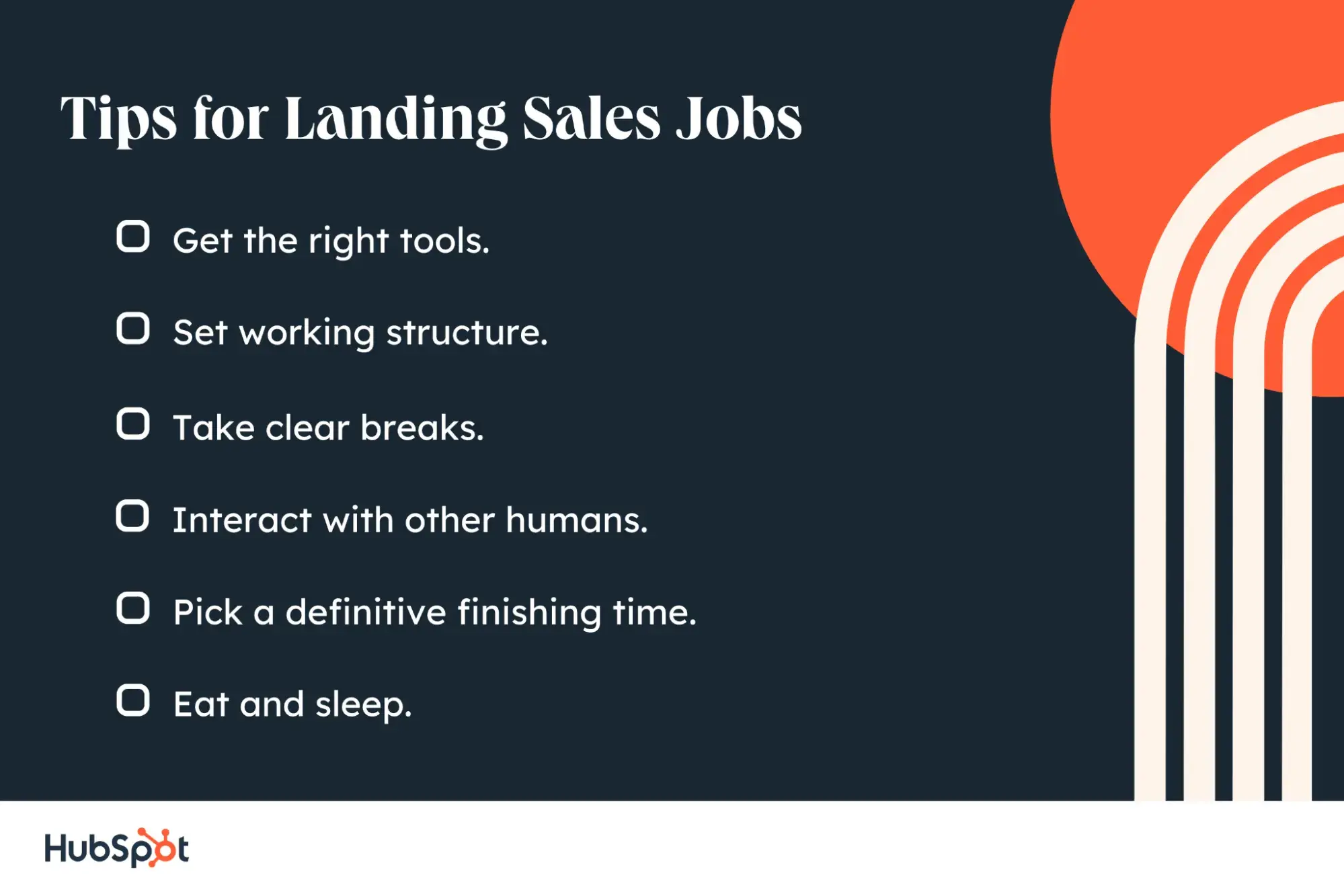
1. Get the right tools.
Something that no one tells you about working remotely long-term is that the cost of your mistakes is greater than when you’re in the office. Little missteps, like falling behind on tasks or not replying to emails, can become your defining features as a co-worker. I believe that the process of transitioning to remote work starts now with being exceptionally organized.
You need a tool that helps you:
- Sync meetings, contacts, emails, etc. (keep things from falling through the cracks).
- Stay on top of your communication across channels.
- Remind you of tasks that are due.
The ideal tool is something intuitive and designed for ease, like HubSpot CRM. I love how tasks are organized in a few simple tabs (no overkill). You can add a task with just a few clicks:
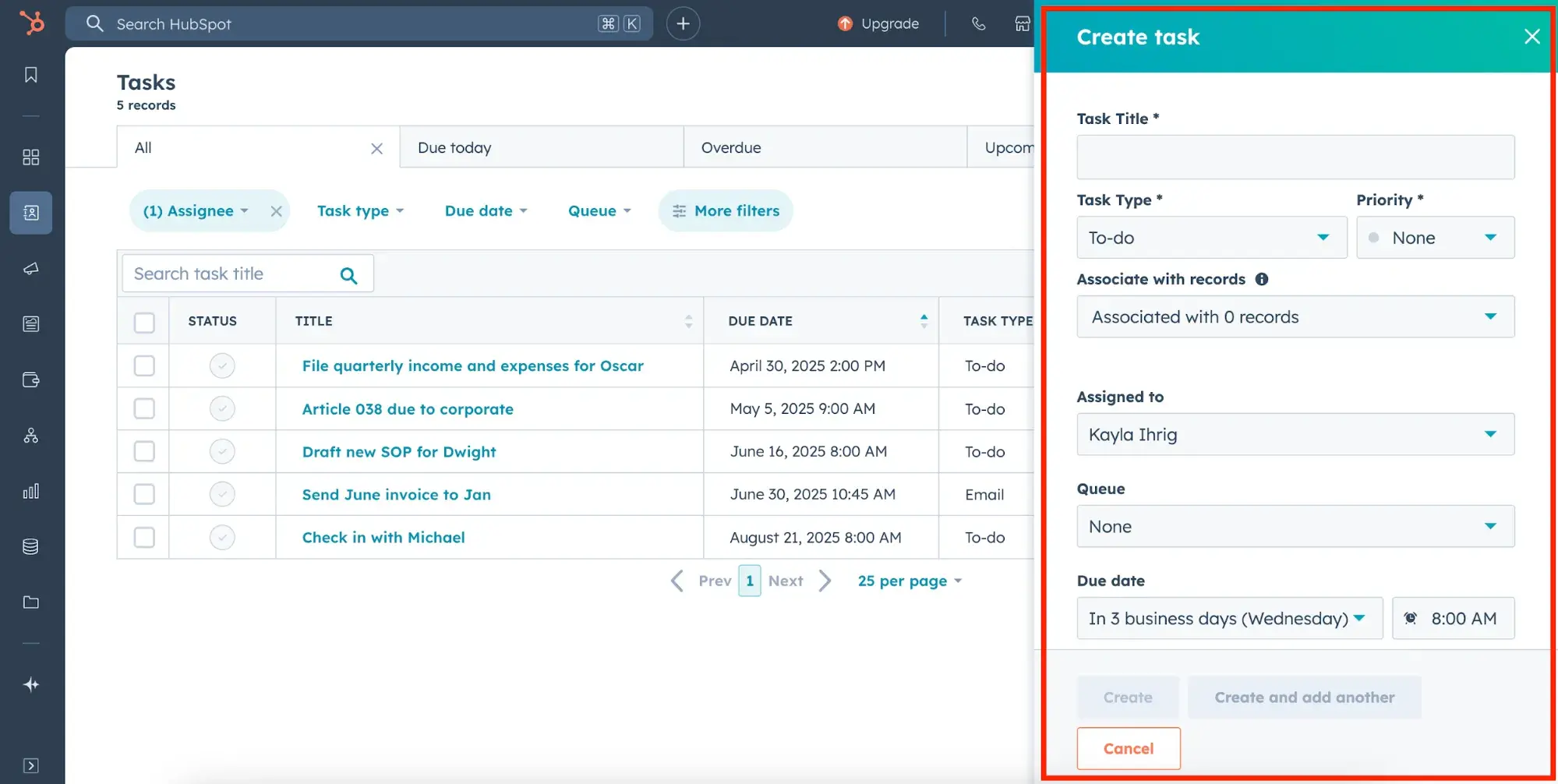
Then your tasks are all organized in one place, where you can switch between tabs to see different groupings. You can also create your own tab groupings to tailor this to your exact preferences:
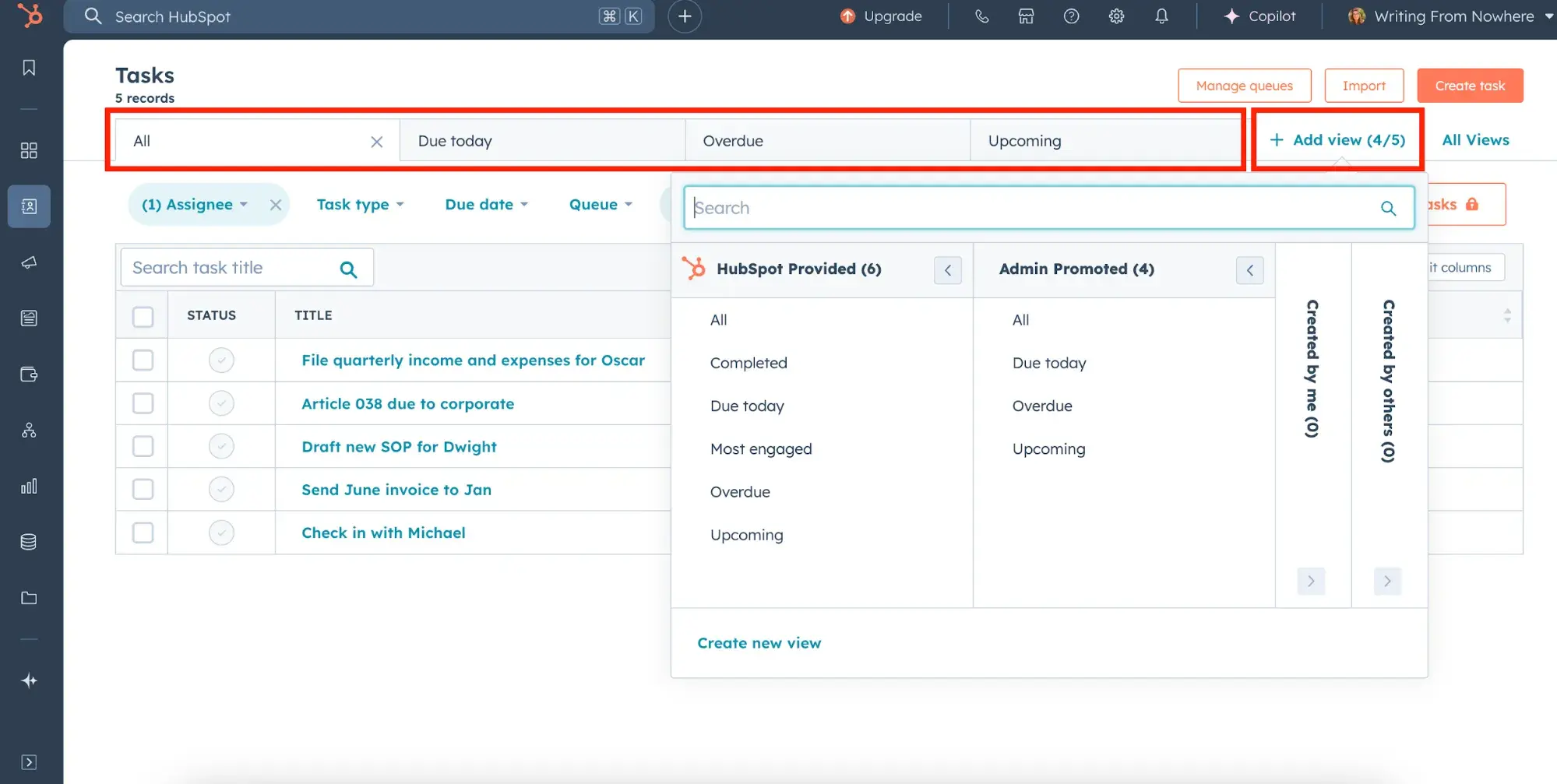
I love syncing my tasks with my calendar. Working from home has greatly decreased the number of meetings that I have per month, which has left my calendar pretty open. I don’t worry about overscheduling myself in meetings anymore, but I do worry about overlapping deadlines. I need to budget my week very carefully to not overload my schedule.
You can sync your calendar in just a few clicks:
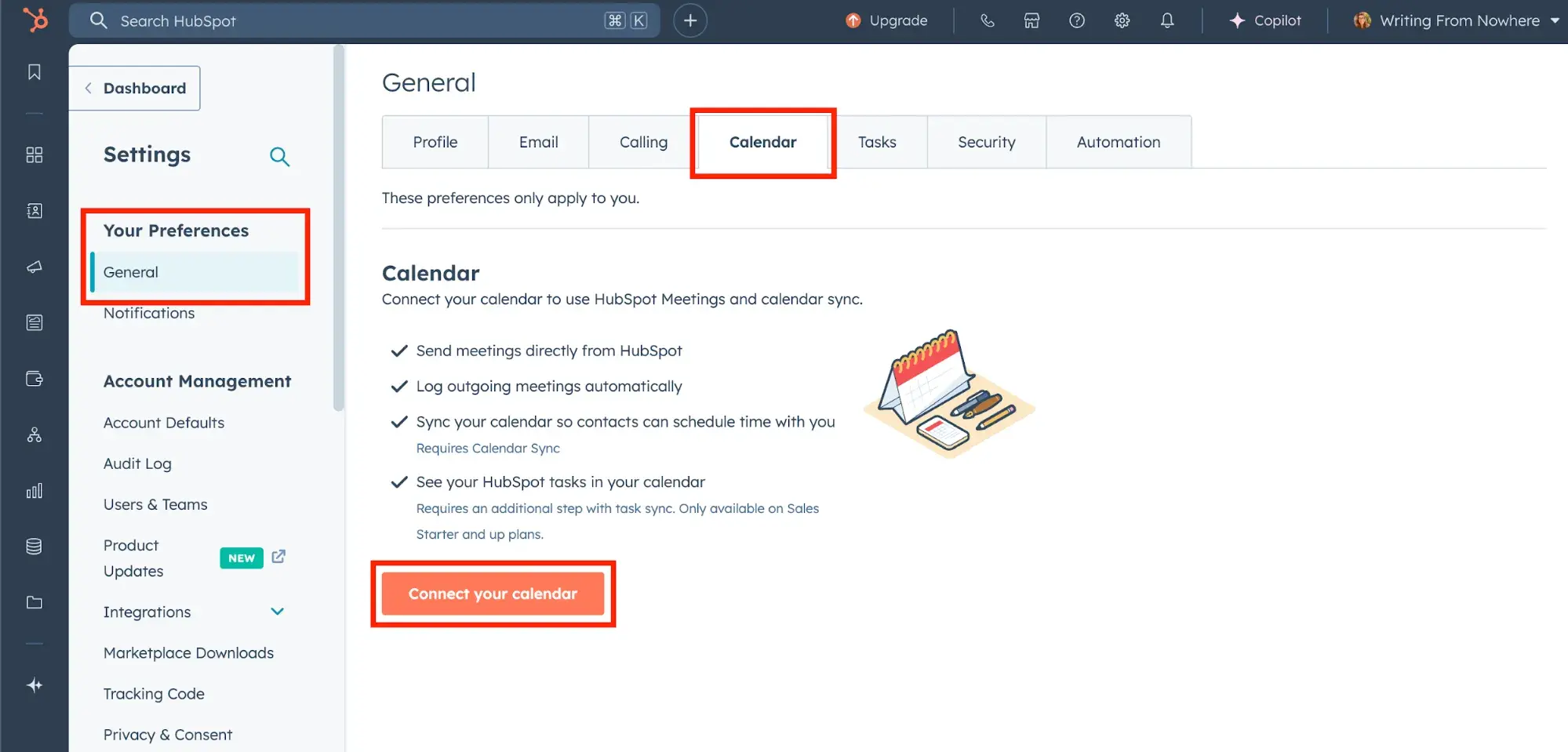
Finding tools that are simple enough to make your life easier is a formative first step in transitioning to working remotely. Next is opening a discussion with your employer.
2. Set working structure.
Structure is your friend when beginning to work remotely. Taking the time to intentionally set yourself up for success will help you avoid distractions, time-consuming mistakes, and overall procrastination. Here are some questions to ask yourself:
- How? Will you get dressed every day, complete a morning routine, etc.?
- Where? Will you work from home, a coworking space, etc.?
- When? Will you have set working hours?
- Who? Will you work alone?
My current routine is to wake up at 7 a.m., get dressed, and have coffee with my husband in the morning before opening my laptop. Unchecked, my natural tendency is to start my day off with screen time and no morning routine. Reinforcing this structure sets me up for a much more balanced and productive work day.
When I sit down to work in the morning, I always know which task I’m going to start with. I decide this based on two factors: task due dates and prioritization. At a quick glance inside Hubspot CRM, you can easily see which tasks you have due today and due soon (plus their priority level):
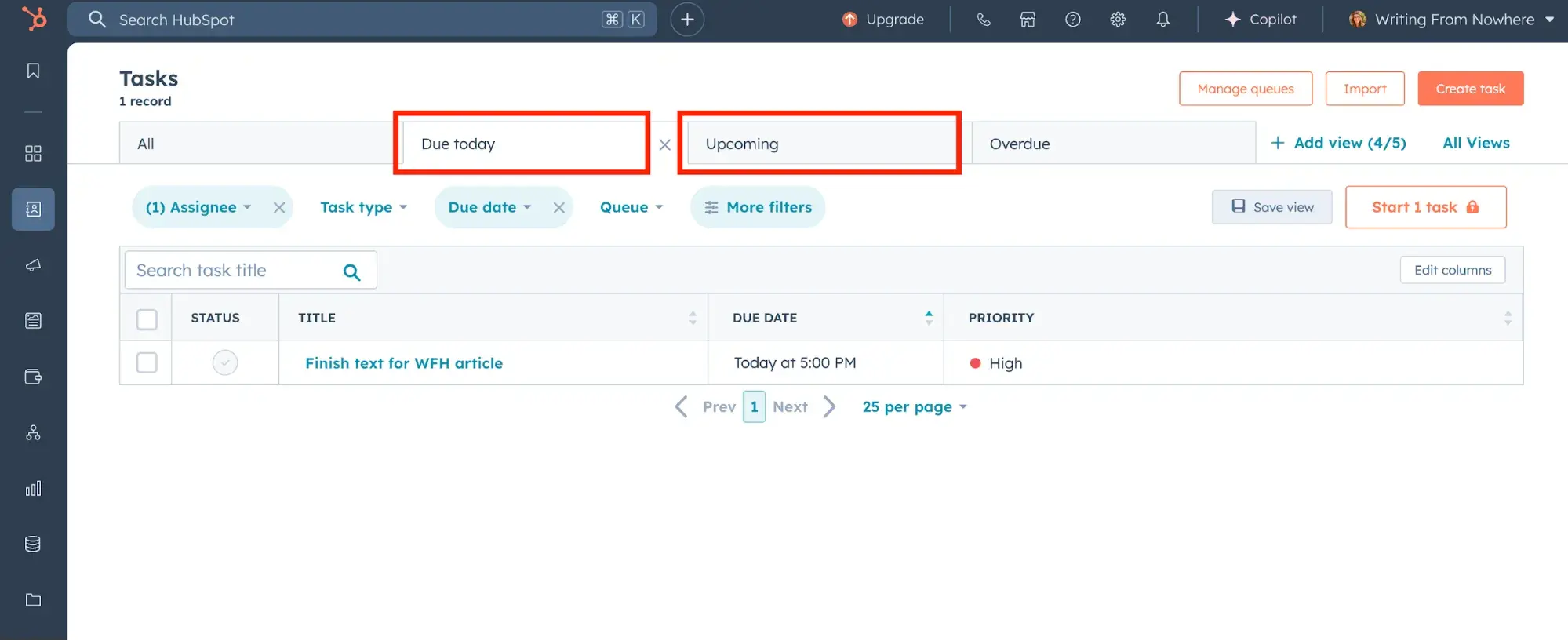
3. Take clear breaks.
It can be so easy to get lost in your work as a telecommuter. Breaks are crucial to both your mental health and your productivity.
Try to use your breaks to get away from your desk. Go for a walk, enjoy fresh air, or spend time with others who might also be in the house. Take breaks near natural light, if possible, for added mental stimulation.
4. Interact with other humans.
When you start working from home, you’ll likely miss the casual social interactions with colleagues you’re used to throughout the day. Little staples of office life, like small talk and social activities, made each day in the office unique. So what can you do? Communicate.
Use your breaks to interact with others. Have virtual social time with colleagues, and build human contact into your non-work-related tasks.
Managing virtual relationships becomes much easier using HubSpot CRM. All of the information on a single contact is stored with:
- An AI-generated summary of your contact with each individual.
- Varied tools to communicate, all within your dashboard.
- Automated follow-up communication and reminders.
There’s an incredible amount of value packaged into one digestible page. My favorite feature is the Breeze AI summary — it gives you a summary of your communication, AND you can prompt it with questions. It feels like getting the world’s best assistant.
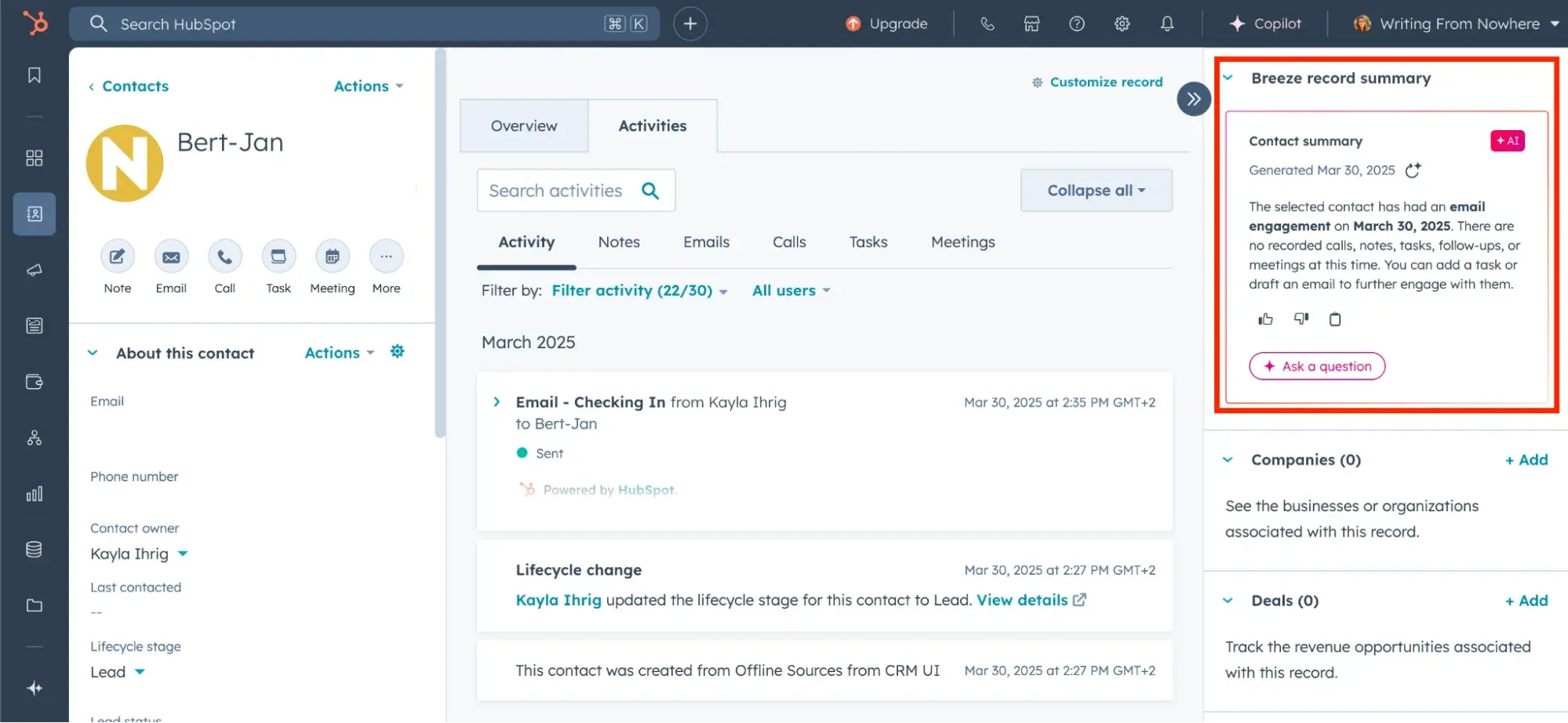
5. Pick a definitive finishing time.
You might be under the impression that working from home establishes better work-life balance, but be careful with that assumption. Working from home can also feel like being at a casino — you can get so caught up in your activity that you lose complete track of time.
In lieu of coworkers whose packing up and leaving the office reminds you to do the same, set an alarm at the end of the day to indicate your normal workday is coming to an end. You don’t have to stop at exactly that time, but knowing the work day is technically over can help you start the process of saving your work and calling it quits for the evening.
6. Eat and sleep.
When analyzing how working from home impacts your health, it’s easy to fixate on the sedentary nature. I get it; my step counter probably thought I died when I first went remote. But let’s not ignore the potential health benefits:
- Breaks can be spent doing exercise, walking, meditating, etc.
- Your workspace can be personalized to fit your needs.
- Without a commute, you have more hours for sleep.
- Access to your kitchen makes meals easier.
For many remote workers, it gets easier with practice to prioritize health and wellness at home.
Working From Home Tips

1. Get started early.
When working in an office, your morning commute can help you wake up and feel ready to work by the time you get to your desk. At home, however, the transition from your pillow to your computer can be much more jarring. I know some workers who thrive with a morning routine, and others who thrive by jumping straight into their to-do lists.
Lindsay Kolowich says, “When I work from home, I wake up, put on a pot of coffee, and start working immediately — much earlier than normal working hours. I only start making breakfast once I’ve hit a wall or need a break. I’m a morning person and find I can get a ton done in the early morning hours, so this works really well for me.”
2. Make after-work plans.
Do you have trouble closing your laptop and moving on to the next part of the day? Make it easy for yourself by making plans immediately after work.
“You can instantly boost your remote work productivity by scheduling something fun or important in the afternoon,” shared Mitch Glass, founder of Project Untethered and remote worker of seven years.
“Adding a firm deadline cranks up the pressure and forces you to knock out the most important tasks as fast as possible. If left unchecked, remote work has a way of creeping into the evening hours, so having this hard cutoff point helps protect work–life balance as well,” Glass says.

3. Use the Pomodoro technique.
One of the top tips for working remotely is to take breaks, but that poses a challenge for most remote workers. Let the Pomodoro method make it achievable.
“My top work-from-home tip is to use the Pomodoro method to stay productive and focused throughout the day,” shared Kat Smith, founder of A Way Abroad. Smith has been a remote worker for seven years, having spent four years as a freelancer and three years as a full-time remote employee.
In the traditional Pomodoro method, you set a 25-minute timer, pick a specific task you can finish in that time, get rid of any distractions, start the clock, and complete your task.
“This creates some urgency, so you don’t let a single task stretch longer than it should. When the timer beeps, take a 5-minute break. You can repeat this throughout the day,” Smith says.
This technique is so popular that you can easily add a Pomodoro Google Chrome Extension to your browser.
4. Pretend like you are going into the office.
The mental association you make between work and an office can make you more productive, and there’s no reason that feeling should be lost when working remotely. I know that you love working in your sweatpants (I do, too), but the mere act of changing clothes to something more serious will give you a signal to get work done throughout the day.
Take to heart the words of BetterUp senior brand designer Anna Faber-Hammond, who says, “Get fully ready for the day and pretend you’re actually going to work. Otherwise, you might find yourself back in bed.”
5. Structure your day like you would in the office.
When working from home, you’re your own personal manager and can choose your working hours.
However, without things like an in-person meeting schedule to break up your day, I know it’s easy to lose focus or burn out.
To stay on schedule, segment what you’ll do and when for the day. If you have an online calendar, create personal events and reminders that tell you when to shift gears and start on new tasks. Google Calendar makes this easy.
Structuring your day as you would in the office also saves you from work creep. With this structure in place, working from home will not cause your work to invade your personal life.
“Are mornings for writing while you’re in the office? Use the same remote work schedule at home. This structure will help keep you focused and productive,” says Ginny Mineo of Spring Health.
6. Communicate expectations with anyone who will be home with you.
If you’re already working from home or you manage to get a remote position through one of the ways listed above, you might have “company” at home. I suggest you make sure any roommates, family members, and dogs (well, maybe not dogs) respect your space during work hours.
Just because you’re working from home doesn’t mean you’re home. If you share space with another work-from-home adult, you may have to lay ground rules about meeting times, shared desks and chairs, and quiet times.
Sam Mallikarjunan, CEO of AI company OneScreen, tells how he manages to get work done even when people are around.
“If anyone else is going to be at home when you’re working, they just have to be clear that when you’re in your ‘office’ (in my case, my signal to the family is having headphones on), you’re working — even if it looks like and feels like you’re hanging out at home,” Mallikarjunan says.
He adds, “It’s easy to get distracted by the many things that have to be done around the house during the day.”
If working alongside other family members or housemates can’t be avoided, consider investing in home office equipment like noise-canceling headphones or room dividers to minimize distractions.
7. Don’t stay at home.
If your home office is just not getting it done for you, I have great news for you. You can take your work-from-home life a step further and get out of the house.
Coffee shops, libraries, public lounges, coworking spaces, and similar Wi-Fi-enabled spaces can help you simulate the energy of an office so you can stay productive even when you don’t sit in an official workplace.
Content marketer Corey Wainwright comments, “I get out of my home to work and go to an establishment with actual tables, chairs, and people. It helps simulate the work environment and removes the distractions I typically have at home, like the urge to finally clean my room, do laundry, or watch TV.”
8. Make it harder to use social media.
Social media is designed to make it easy for us to open and browse quickly. As remote workers, though, this convenience can be detrimental to our remote work productivity.
To counteract your social networks’ ease of use during work hours, remove them from your browser shortcuts and log out of every account on your phone or computer.
You might even consider working primarily in a private (or, if you’re using Chrome, an “Incognito”) browser window.
This ensures you stay signed out of all your accounts, and each web search doesn’t autocomplete the word you’re typing. I guarantee you won’t be tempted to take too many social breaks during the day.
Also, many have found it helpful to shut off social media notifications during the hours they work from home.
Al Biedrzycki, partner marketing at Ramp, says, “I remove all social networks from my toolbar bookmarks... you can get sucked in without knowing it, so eliminating the gateway to those networks keeps me on track.”
9. Work when you’re at your most productive.
Nobody sprints through their work from morning to evening — your motivation will naturally ebb and flow throughout the day.
However, when you’re working from home, it’s all the more important to know when those ebbs and flows will take place and plan your schedule around it.
To capitalize on your most productive periods, I recommend saving your more challenging tasks for when you know you’ll be in the right headspace for them. Use slower points of the day to knock out the easier logistical tasks on your plate.
Verily Magazine calls these tasks “small acts of success,” and they can help build your momentum for the heavier projects that are waiting for you later on.
Product designer Brittany Leaning says about her routine, “For me, the most productive times of the day are usually early in the morning or late at night. I recognize this and try to plan my day accordingly. Also, music that pumps me up doesn’t hurt.”
The responsibility is on you to know when you are most productive and build your work schedule around the periods of maximum productivity.
10. Save calls for the afternoon.
Sometimes, I’m so tired in the morning that I don’t even want to hear my voice — let alone talk to others with it.
You shouldn’t have to give yourself too much time to become productive in the morning, but you can give yourself some extra time before working directly with others.
If you’re struggling to develop a reasonable work schedule for yourself as a telecommuter, start with the solitary tasks in the morning.
Save your phone calls, meetings, Google Hangouts, video calls, and other collaborative work for when you’ve officially “woken up.”
VP of Partnership Marketing at HubSpot James Gilbert advises that you “take advantage of morning hours to crank through meaty projects without distractions, and save any calls or virtual meetings for the afternoon.”
11. Focus on one distraction.
There’s an expression out there that says, “If you want something done, ask a busy person.”
The bizarre but true rule of productivity is that the busier you are, the more you’ll do.
It’s like Newton’s law of inertia: If you’re in motion, you’ll stay in motion. If you’re at rest, you’ll stay at rest. And busy people are in fast enough motion that they have the momentum to complete anything that comes across their desks.
Unfortunately, it’s hard to find things to help you reach that level of busyness when you’re at home — your motivation can just swing so easily. HubSpot’s principal marketing manager, Pam Vaughan, suggests focusing on something that maintains your rhythm (in her case, it’s her daughter).
She says, “When I work from home, my 20-month-old daughter is home with me, too. It seems counterintuitive, but because I have to manage taking care of her and keeping her happy and entertained while still getting my work done, the pressure helps to keep me focused.”
Vaughan says when her daughter is napping or entertaining herself, she goes into super-productive work mode.
“The ‘distraction’ of my daughter (I mean that in the most loving way possible) means I can’t possibly succumb to some of the other common distractions of home,” she says.
12. Plan out what you’ll be working on ahead of time.
Spending time figuring out what you’ll do today can take away from actually doing those things. And, you’ll have planned your task list so recently that you can be tempted to change your schedule on the fly.
I think it’s important to let your agenda change if you need it to, but it’s equally important to commit to a schedule that outlines every assignment before you begin.
Try solidifying your schedule the day before, making it feel more official when you wake up the next day to get started on it.
“Plan out your week in advance to optimize for the environments you’ll be in,” says Niti Shah.
13. Use technology to stay connected.
Working from home might make you feel cut off from the larger operations happening in your company.
Instant messaging and videoconferencing tools like Slack and Zoom can make it easy to check in with other remote employees and remind you how your work contributes to the big picture.
I’ve found it’s also vital to invest in the right technology. For instance, a slow router can take the steam right off your enthusiasm to work, so it’s better to invest in a high-performance router.
CMO and former HubSpot employee, Meghan Keaney Anderson, remarks:
“At HubSpot, we use Slack to keep conversations going remotely, Trello to keep us organized around priorities, and Google Hangouts plus Webex to make remote meetings more productive. Getting the right stack of support tools to fit your work style makes a big difference.”
14. Match your music to the task at hand.
During the week, music is the soundtrack to your career (cheesy, but admit it, it’s true).
And, at work, the best playlists are diverse playlists. Personally, I like listening to music that matches the energy of the project I’m working on to boost my productivity.
Video game soundtracks are excellent at doing this. In the video game, the lyric-free music is designed to help you focus; it only makes sense that it would help you focus on your work.
Want some other genres to spice up your routine and make you feel focused? Take them from Mineo, a startup marketer, who offers her work music preferences below.
“When I’m powering through my inbox, I need some intense and catchy rap/R&B (like Nicki Minaj or Miley Cyrus) blasting through my headphones, but when I’m writing, Tom Petty does the trick. Finding what music motivates and focuses me for different tasks (and then sticking to those playlists for those tasks) has completely changed my WFH productivity,” Mineo says.
15. Use laundry as a work timer.
You might have heard that listening to just two or three songs in the shower can help you save water.
And it’s true; hearing a few of your favorite songs start and end, one after another, can remind you how long you’ve been in the bathroom and shorten your wash time.
Why do I bring this up? Because the same general principle can help you stay on task when working from home. But instead of three songs off your music playlist, run your laundry instead.
Doing your laundry is a built-in timer for your home. So, use the time to start and finish something from your to-do list before changing the load.
Committing to one assignment during the wash cycle and another during the dry process can train you to work smarter on tasks that you might technically have all day to tinker with. And when you know there’s a timer, it makes it hard for distractions to derail your work.
People ops manager Emma Brudner notes:
“I also usually do laundry when I work from home, and I set mini-deadlines for myself corresponding to when I have to go downstairs to switch loads. If I’m working on an article, I tell myself I’ll get to a certain point before the wash cycle ends. Then I set another goal for the dryer.”
16. Choose a dedicated workspace.
Rather than cooping yourself up in your room or on the couch in the living room — spaces associated with leisure time — I recommend dedicating a specific room or surface in your home to working remotely. I’ve discovered that a dedicated office space can be pivotal in having fewer distractions.
No matter the space or location, have an area of the home to work and stay committed to it throughout the day. And, after choosing your dedicated workspace, make the most of it by making it quiet.
Mallikarjunan says, “Have a place you go specifically to work. It could be a certain table, chair, local coffee shop — some place that’s consistently your ‘workspace.’ It helps you get into the right frame of mind.”
Staying Productive While Working From Home
Can I confess something? I still miss office life sometimes, despite having a remote job for the majority of my career. It’s natural to go through ebbs and flows with your work. The secret to success is seeing the process as fluid and always striving for continuous improvement in productivity and job satisfaction.
You need more than just a reliable internet connection to make this lifestyle work for you. You need systems, like HubSpot CRM, to keep things from falling through the cracks. Press play for an easy beginner tutorial for setting up HubSpot CRM. You’ll already be one step closer to having a thriving remote job.
Editor's note: This post was originally published in September 2014 and has been updated for comprehensiveness.
Marketing Jobs


